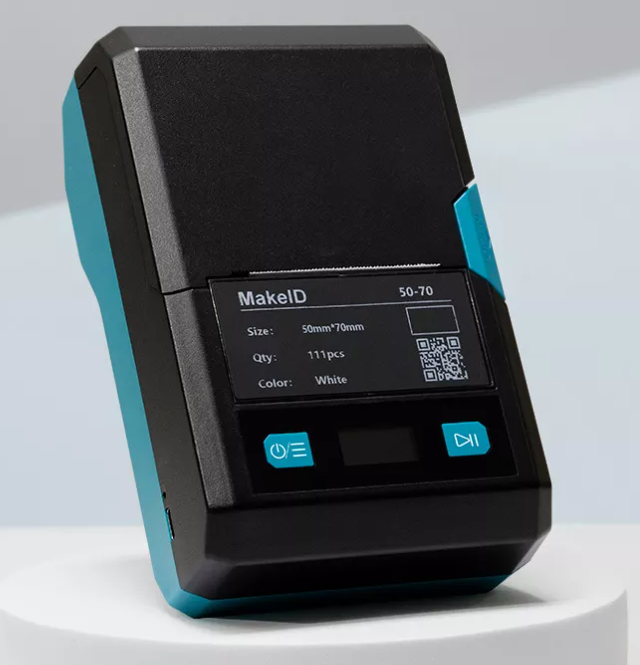Fiber-optic networks are the backbone of modern connectivity, but managing their physical resources—from cables and splicing boxes to distribution frames—poses unique challenges. Field technicians and network managers often grapple with unclear labeling (e.g., faded tags on underground cables), time-consuming maintenance (searching for specific fiber links takes hours), and data silos (manual records misaligned with digital systems). These pain points don’t just slow operations; they increase downtime risks for critical services like broadband and 5G.
Label printers, when tailored to fiber-optic scenarios, solve these issues by turning “chaotic resource tracking” into “streamlined, data-driven management.” Below’s how they empower efficiency across the fiber-optic lifecycle.
1. Standardized, Durable Labeling: Eliminate “Guesswork” in Fiber Routing
Fiber-optic resources face harsh conditions: underground moisture, outdoor UV exposure, and temperature fluctuations. Generic paper labels fade or peel within months, leaving technicians guessing which cable connects to which node—a mistake that can delay network repairs by days.
Label printers designed for fiber optics address this with:
- Weather-resistant materials: Thermal transfer printers (the gold standard for fiber management) use resin-based ribbons and synthetic labels (PVC or PET) that withstand -40°C to 85°C, UV rays, and water. Labels stay legible for 5–10 years, even in underground ducts or rooftop cabinets.
- Fiber-specific label designs: Printers support specialized formats like “wrap-around cable labels” (for cylindrical fiber jackets) and “splice box ID tags” (with space for link IDs, installation dates, and technician names). Standardized labels ensure every team member—from new hires to contractors—can instantly identify resources.
For example, a telecom provider in Texas cut fiber repair time by 40% after switching to fiber-tailored label printers: Technicians no longer had to trace cables manually; they simply scanned labels to confirm routes.
2. On-Site, Rapid Labeling: Accelerate Installation and Maintenance
Fiber projects often require on-the-spot labeling—whether installing new cables during a road construction project or rebranding links after a network upgrade. Desktop printers in offices are useless here; technicians need portable solutions that keep up with fieldwork.
Fiber-optimized label printers offer:
- Portability: Handheld models (under 1kg) run on rechargeable batteries, supporting 8+ hours of continuous printing. Technicians can print labels directly at the splicing point or cabinet, no need to haul cables back to a workshop.
- Quick data input: Built-in keyboards or Bluetooth connectivity to mobile apps let users input fiber details (e.g., “Fiber ID: FO-2024-056, Band: C-Band, Length: 1.2km”) in seconds. Batch printing features also speed up large-scale installations (e.g., labeling 50+ cables for a new data center).
This cuts “installation lag” significantly: A UK broadband team reduced time spent on labeling during fiber-to-the-home (FTTH) rollouts by 30%, completing 20 more households per week.
3. QR Code Integration: Bridge “Physical Resources” and “Digital Systems”
Modern fiber networks rely on OSS (Operations Support Systems) or IMS (Inventory Management Systems) to track resource status. But manual data entry—typing label info into these systems—leads to errors (e.g., mistyped fiber IDs) that break the “physical-digital link.”
Label printers solve this by embedding QR codes directly into labels:
- Printers generate QR codes linked to OSS/IMS data (e.g., a scan pulls up the fiber’s test results, maintenance history, and connected nodes). Technicians use smartphones to scan labels, updating statuses (e.g., “Repaired: 2024-06-15”) in real time—no more paper logs or double-entry.
- High-resolution printing (300+ DPI) ensures QR codes are scannable even on small labels (e.g., for microduct fibers), avoiding the frustration of unreadable codes in tight spaces.
A European telecom reported a 50% drop in data entry errors after adopting QR code labeling—critical for compliance with regulatory requirements (e.g., EU telecom resource tracking mandates).
4. Reduced Downtime: Minimize “Search and Fix” Delays
Network outages cost fiber providers $10,000–$100,000 per hour, depending on the affected area. A major cause of prolonged downtime? Inability to quickly locate faulty fiber links.
Label printers cut downtime by making resources “searchable”:
- During outages, technicians scan labels to pinpoint the exact faulty segment (e.g., “Splice Box SB-08, Fiber 3”) instead of tracing entire routes.
- Labels on spare parts (e.g., patch cords, transceivers) let teams quickly identify compatible replacements—no more rummaging through unlabeled bins.
A Southeast Asian ISP reduced fiber outage resolution time from 2.5 hours to 45 minutes after standardizing labeling with fiber-specific printers.
For fiber-optic teams seeking a printer that checks all boxes—durability, portability, and digital integration—MakeID GP53 is the ideal choice.

